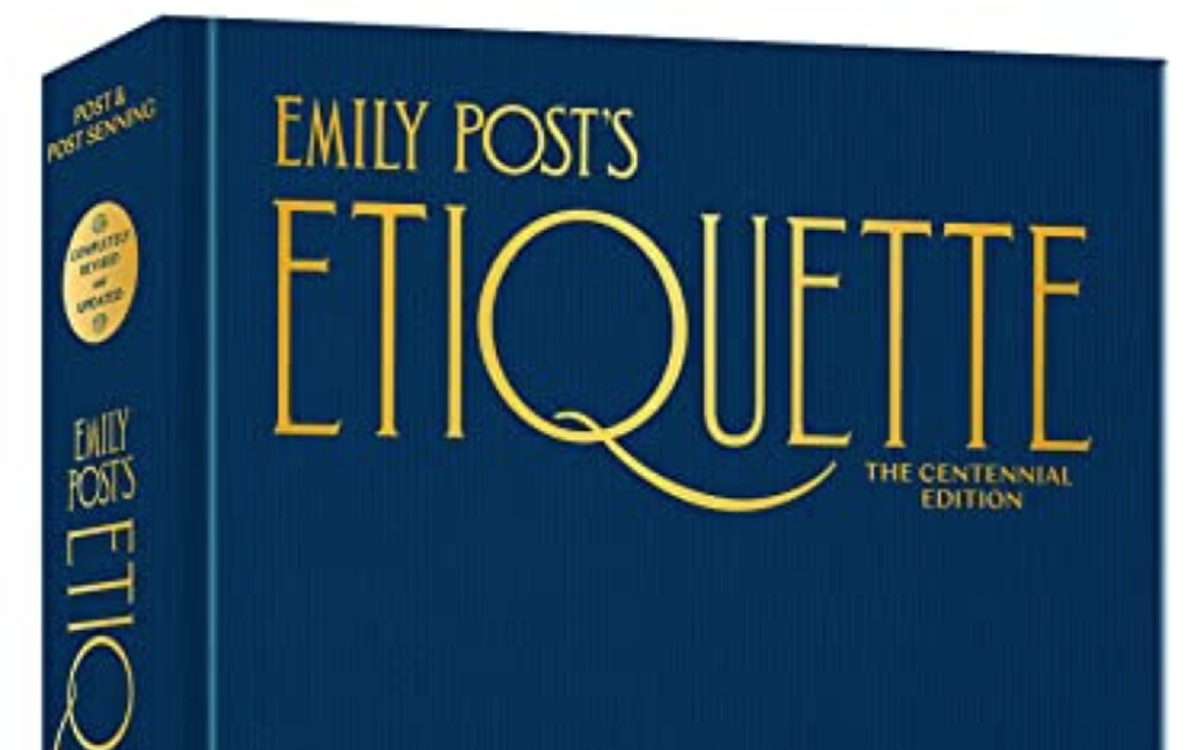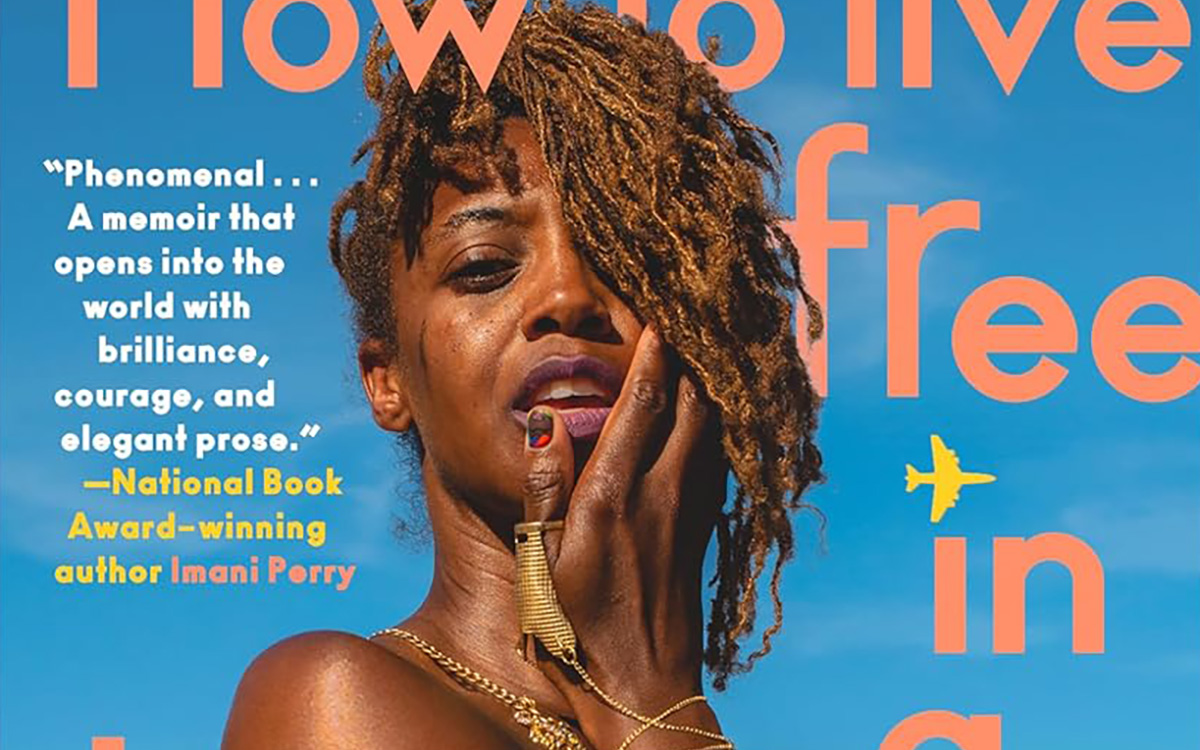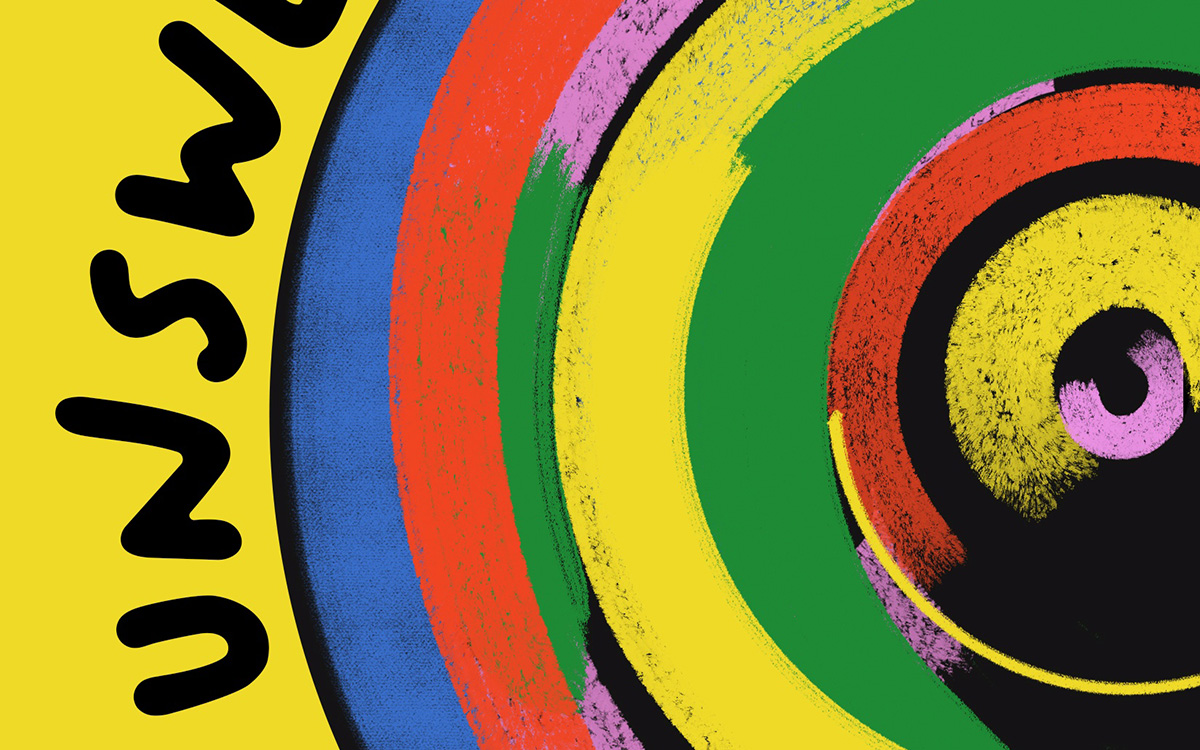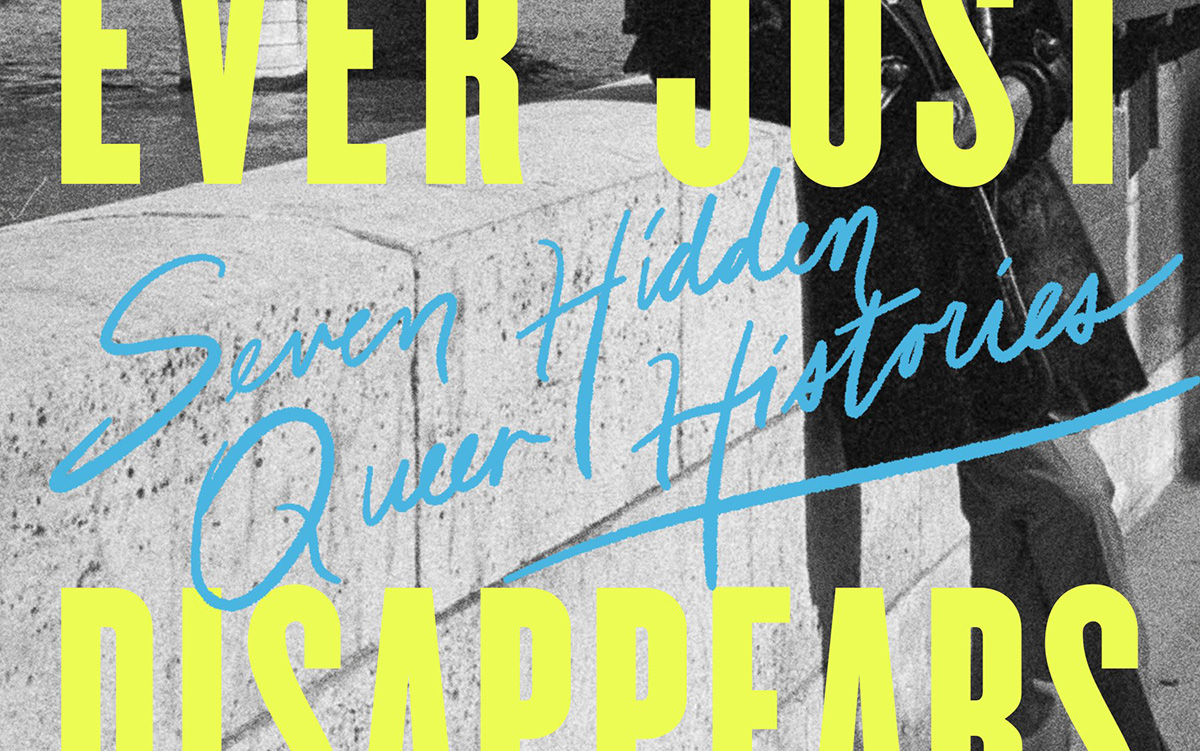Books
20th edition of Emily Post’s ‘Etiquette’ offers updated advice on pronouns and much more
A guide for daily life ‘with all its successes and mishaps’

Some families manage bakeries, nurseries, or vineyards.
For Daniel Post Senning, great-great grandson of Emily Post and an Emily Post Institute co-president, and Lizzie Post, great-great granddaughter of Emily Post and an Emily Post Institute co-president, etiquette is the family business.
The Emily Post Institute, based in Waterbury, Vt., conducts seminars and trainings. It partners with businesses and nonprofit groups to “bring etiquette and manners to a wide audience,” according to its website.
When you think of etiquette, you’re likely to be transported to Downton Abbey. Butlers, finger bowls, the dancing school lessons you hated as a kid – stuffy, rich (usually white, hetero) people at formal dinners managing a zillion salad forks – come to mind.
But, for Post and Senning, who co-host the popular, entertaining podcast “Awesome Etiquette,” etiquette is as far from being an ossified, exclusionary code of manners as we are from being the Dowager having tea at Downton.
Emily Post, the acclaimed etiquette maven, published her first book on etiquette, “Etiquette in Society, in Business, in Politics and at Home,” in 1922.
Post’s seminal book, considered by many to be the “holy writ” of etiquette (and stolen from libraries almost as frequently as the Bible), has been revised by Post herself and her descendants during the past century to evolve with changing times.
“Emily Post’s Etiquette, The Centennial Edition” by Lizzie Post and Daniel Post Senning, the 20th edition of Emily Post’s “Etiquette,” is just out. (For info on “Emily Post’s Etiquette, the Centennial Edition,” the Awesome Etiquette podcast and the Emily Post Institute, visit emilypost.com.)
The “Centennial Edition” has lively, up-to-date advice and discussion on everything in life in the early 2020s from the use of “mx” as a title to grief to respecting people’s pronouns to how to get company to stop making bigoted “jokes” to how to handle an inebriated guest.
From the get-go, Emily Post, who was born in Baltimore in 1872 during the Gilded Age and died in 1960, didn’t view etiquette as restrictive or exclusionary. “As Emily explained,’” Post and Senning write, “etiquette is not some rigid code of manners; it’s simply how persons’ lives touch one another.”
If you browse some editions of Emily Post’s books (as this reporter has), you won’t find schoolmarmish directives or ethereal descriptions of the etiquette gods’ mannered lives on Mount Olympus.
You’ll find daily life “with all its successes and mishaps,” Post and Senning write, “With tales like ‘How a Dinner Can Be Bungled’ and characters such as Mrs. Worldly, Constance Style, Mrs. Kindhart and the Onceweres.”
Emily Post painted relatable pictures of what to do and not to do, Post and Senning write.
Though Emily Post wouldn’t have known what a smartphone or social media were, her etiquette “still aims to equip you,” write Post and Senning, “with a sense of confidence and preparedness for some of the situations you’ll encounter at home, at work, in your social life, and when you’re out and about.”
Despite claims that etiquette is dead, it is very much alive, say Post and Senning.
Steven Petrow, an award-winning journalist and expert on civility and manners, agrees. “I’m always surprised by how timely Emily Post’s advice continues to be,” Petrow, who is gay, said in an email to the Blade. “Recently, I wrote about ‘monkeypox manners,’ and cited Mrs. Post’s timeless advice about respect, consideration and honesty in our social interactions, which includes those in the bedroom.”
Post and Senning graciously took time out from their busy schedules (the launch of the “Centennial Edition,” hosting their podcast – along with their other work with the Emily Post Institute) to talk with the Blade over the phone in separate interviews.
“Emily Post’s Etiquette, The Centennial Edition” was a Herculean labor of writing and editing for Post and Senning. It took a year to write the book, Post said. And, then there was all of the time spent to ensure that the book was carefully edited.
“I would write,” said Post, 40, who manages the Institute’s publishing efforts, “Dan would come in and help me edit the book.”
It was intense, “day-to-day” labor for her and Senning (along with their other work), Post said. “I’m grateful to all the people who were willing to have their lives disrupted while we worked on it,” she added.
Etiquette has been used for less than gracious purposes, Post said. “It can easily be exclusive.”
The Post family believes that etiquette is based on the principles of consideration, respect and honesty. This may sound abstract. But these principles aren’t empty words. They have a profound impact in the real world.
Before joining the Emily Post Institute in 2008 when he was 30, Senning worked in the performing arts, touring with the Laurie Cameron Company in Los Angeles.
Today, Senning, who lives in Duxbury, Vt., with his wife, Puja and their three children Anisha, Arya, and William, manages the Institute’s training programs. He has co-authored several books on etiquette covering topics from business to digital manners and regularly speaks with media outlets about business, technology, and dining etiquette.
In 2009, same-sex marriage became legal in Vermont. “Then, before the Supreme Court same-sex marriage ruling,” he said, “we were in the vanguard. We got questions about how to respond to same-sex weddings,” Senning added.
The Institute’s response was to note how normal civil unions were, Senning said, and that same-sex weddings weren’t different from hetero weddings.
“If you’re invited to a civil union, reply,” Senning recalled the Institute advising, “let people know if you can or can’t attend.”
Senning loved the “normalization” of the response. “It was really affirming to me,” he said.
Etiquette isn’t only for happy times. It’s called on when things get rough.
“Etiquette has a role in hard times,” Post, who’s been an American Express spokesperson and written columns for publications ranging from “Broccoli Magazine” to “Women’s Running,” said.
Many go through hard times from losing a job to being ill to grieving, she added. Emily Post may have written on etiquette a century ago, but her thoughts on grief ring as true on an iPad screen as they did then in a hardback book.
“At no time does solemnity so possess our souls as when we stand deserted at the brink of darkness into which our loved one has gone,” Emily Post wrote in 1922, “And the last place in the world where we would look for comfort at such a time is in the seeming artificiality of etiquette; yet it is in the moment of deepest sorrow that etiquette performs its most vital and real service.”
“All set rules for social observance have for their object the smoothing of personal contracts,” Emily Post added, “and in nothing is smoothness so necessary as in observing the solemn rites accorded our dead.”
Etiquette can help people grieve together in community through writing a condolence note, attending a funeral or another act of common grief, Lizzie Post said.
If you’ve suffered a loss, it can be incredible to realize the impact a loved one has had when you receive condolence notes or see so many people at a memorial service.
There’s a new trend where you can take part in the grief without going to a funeral, Post, who lives in her native state of Vermont, said. “When someone dies, for example, you raise a glass at five o’clock to honor them.”
Sometimes you have to use etiquette to stand against prejudice. If someone’s telling a racist or anti-queer joke at your dinner table, you’ll need to say, “‘I’m sorry. This is not a joke for this table,’” Post said.
While etiquette counsels against rudeness, safety trumps etiquette, Post and Senning have said on the Awesome Etiquette podcast and in the “Centennial Edition.”
Tolerance doesn’t mean tolerating an unwanted hug, an inappropriate touch or being “othered,” said Post, who has co-authored and authored etiquette books on topics ranging from weddings to legalized cannabis use.
Take hugging. “We talk about how to ask for a hug and how to block a hug,” Post said.
Etiquette experts, like the rest of us, take time off. On vacation, Post, co-author and narrator with Kelly Williams Brown of the Audible Original “Mistakes were Made” (think etiquette meets “Broad City”), doesn’t want to be rude to people. “But, sometimes, I don’t want to analyze behavior,” she said, “I just want to act.”
For info on the fascinating life of Emily Post, go to “Emily Post: Daughter of the Gilded Age, Mistress of American Manners” by Laura Claridge.
Books
New book offers observations on race, beauty, love
‘How to Live Free in a Dangerous World’ is a journey of discovery

‘How to Live Free in a Dangerous World: A Decolonial Memoir’
By Shayla Lawson
c.2024, Tiny Reparations Books
$29/320 pages
Do you really need three pairs of shoes?
The answer is probably yes: you can’t dance in hikers, you can’t shop in stilettos, you can’t hike in clogs. So what else do you overpack on this long-awaited trip? Extra shorts, extra tees, you can’t have enough things to wear. And in the new book “How to Live Free in a Dangerous World” by Shayla Lawson, you’ll need to bring your curiosity.

Minneapolis has always been one of their favorite cities, perhaps because Shayla Lawson was at one of Prince’s first concerts. They weren’t born yet; they were there in their mother’s womb and it was the first of many concerts.
In all their travels, Lawson has noticed that “being a Black American” has its benefits. People in other countries seem to hold Black Americans in higher esteem than do people in America. Still, there’s racism – for instance, their husband’s family celebrates Christmas in blackface.
Yes, Lawson was married to a Dutch man they met in Harlem. “Not Haarlem,” Lawson is quick to point out, and after the wedding, they became a housewife, learned the language of their husband, and fell in love with his grandmother. Alas, he cheated on them and the marriage didn’t last. He gave them a dog, which loved them more than the man ever did.
They’ve been to Spain, and saw a tagline in which a dark-skinned Earth Mother was created. Said Lawson, “I find it ironic, to be ordained a deity when it’s been a … journey to be treated like a person.”
They’ve fallen in love with “middle-American drag: it’s the glitteriest because our mothers are the prettiest.” They changed their pronouns after a struggle “to define my identity,” pointing out that in many languages, pronouns are “genderless.” They looked upon Frida Kahlo in Mexico, and thought about their own disability. And they wish you a good trip, wherever you’re going.
“No matter where you are,” says Lawson, “may you always be certain who you are. And when you are, get everything you deserve.”
Crack open the front cover of “How to Live Free in a Dangerous World” and you might wonder what the heck you just got yourself into. The first chapter is artsy, painted with watercolors, and difficult to peg. Stick around, though. It gets better.
Past that opening, author Shayna Lawson takes readers on a not-so-little trip, both world-wide and with observant eyes – although it seems, at times, that the former is secondary to that which Lawson sees. Readers won’t mind that so much; the observations on race, beauty, love, the attitudes of others toward America, and finding one’s best life are really what takes the wheel in this memoir anyhow. Reading this book, therefore, is not so much a vacation as it is a journey of discovery and joy.
Just be willing to keep reading, that’s all you need to know to get the most out of this book. Stick around and “How to Live Free in a Dangerous World” is what to pack.
The Blade may receive commissions from qualifying purchases made via this post.
Books
Story of paralysis and survival features queer characters
‘Unswerving: A Novel’ opens your eyes and makes you think

‘Unswerving: A Novel’
By Barbara Ridley
c.2024, University of Wisconsin Press
$19.95 / 227 pages
It happened in a heartbeat.
A split-second, a half a breath, that’s all it took. It was so quick, so sharp-edged that you can almost draw a line between before and after, between then and now. Will anything ever be the same again? Perhaps, but maybe not. As in the new book “Unswerving” by Barbara Ridley, things change, and so might you.

She could remember lines, hypnotizing yellow ones spaced on a road, and her partner, Les, asleep in the seat beside her. It was all so hazy. Everything Tave Greenwich could recall before she woke up in a hospital bed felt like a dream.
It was as though she’d lost a month of her life.
“Life,” if you even wanted to call it that, which she didn’t. Tave’s hands resembled claws bent at the wrist. Before the accident, she was a talented softball catcher but now she could barely get her arms to raise above her shoulders. She could hear her stomach gurgle, but she couldn’t feel it. Paralyzed from the chest down, Tave had to have help with even the most basic care.
She was told that she could learn some skills again, if she worked hard. She was told that she’d leave rehab some day soon. What nobody told her was how Les, Leslie, her partner, girlfriend, love, was doing after the accident.
Physical therapist Beth Farringdon was reminded time and again not to get over-involved with her patients, but she saw something in Tave that she couldn’t ignore. Beth was on the board of directors of a group that sponsored sporting events for disabled athletes; she knew people who could serve as role models for Tave, and she knew that all this could ease Tave’s adjustment into her new life. It was probably not entirely in her job description, but Beth couldn’t stop thinking of ways to help Tave who, at 23, was practically a baby.
She could, for instance, take Tave on outings or help find Les – even though it made Beth’s own girlfriend, Katy, jealous.
So, here’s a little something to know before you start reading “Unswerving”: author Barbara Ridley is a former nurse-practitioner who used to care for patients with spinal cord injuries. That should give readers a comfortable sense of satisfaction, knowing that her experiences give this novel an authenticity that feels right and rings true, no faking.
But that’s not the only appeal of this book: while there are a few minor things that might have readers shaking their heads (HIPAA, anyone?), Ridley’s characters are mostly lifelike and mostly likable. Even the nasties are well done and the mysterious character that’s there-not-there boosts the appeal. Put everyone together, twist a little bit to the left, give them some plotlines that can’t ruined by early guessing, and you’ve got a quick-read novel that you can enjoy and feel good about sharing.
And share you will because this is a book that may also open a few eyes and make readers think. Start “Unswerving” and you’ll (heart) it.
The Blade may receive commissions from qualifying purchases made via this post.
Books
Examining importance of queer places in history of arts and culture
‘Nothing Ever Just Disappears’ shines with grace and lyrical prose

‘Nothing Ever Just Disappears: Seven Hidden Queer Histories’
By Diarmuid Hester
c.2024, Pegasus Books
$29.95/358 pages
Go to your spot.
Where that is comes to mind immediately: a palatial home with soaring windows, or a humble cabin in a glen, a ramshackle treehouse, a window seat, a coffeehouse table, or just a bed with a special blanket. It’s the place where your mind unspools and creativity surges, where you relax, process, and think. It’s the spot where, as in the new book “Nothing Ever Just Disappears” by Diarmuid Hester, you belong.

Clinging “to a spit of land on the south-east coast of England” is Prospect Cottage, where artist and filmmaker Derek Jarman lived until he died of AIDS in 1994. It’s a simple four-room place, but it was important to him. Not long ago, Hester visited Prospect Cottage to “examine the importance of queer places in the history of arts and culture.”
So many “queer spaces” are disappearing. Still, we can talk about those that aren’t.
In his classic book, “Maurice,” writer E.M. Forster imagined the lives of two men who loved one another but could never be together, and their romantic meeting near a second-floor window. The novel, when finished, “proved too radical even for Forster himself.” He didn’t “allow” its publication until after he was dead.
“Patriarchal power,” says Hester, largely controlled who was able to occupy certain spots in London at the turn of the last century. Still, “queer suffragettes” there managed to leave their mark: women like Vera Holme, chauffeur to suffragette leader Emmeline Pankhurst; writer Virginia Woolf; newspaperwoman Edith Craig, and others who “made enormous contributions to the cause.”
Josephine Baker grew up in poverty, learning to dance to keep warm, but she had Paris, the city that “made her into a star.” Artist and “transgender icon” Claude Cahun loved Jersey, the place where she worked to “show just how much gender is masquerade.” Writer James Baldwin felt most at home in a small town in France. B-filmmaker Jack Smith embraced New York – and vice versa. And on a personal journey, Hester mourns his friend, artist Kevin Killian, who lived and died in his beloved San Francisco.
Juxtaposing place and person, “Nothing Ever Just Disappears” features an interesting way of presenting the idea that both are intertwined deeper than it may seem at first glance. The point is made with grace and lyrical prose, in a storyteller’s manner that offers back story and history as author Diarmuid Hester bemoans the loss of “queer spaces.” This is really a lovely, meaningful book – though readers may argue the points made as they pass through the places included here. Landscapes change with history all the time; don’t modern “queer spaces” count?
That’s a fair question to ask, one that could bring these “hidden” histories full-circle: We often preserve important monuments from history. In memorializing the actions of the queer artists who’ve worked for the future, the places that inspired them are worth enshrining, too.
Reading this book may be the most relaxing, soothing thing you’ll do this month. Try “Nothing Ever Just Disappears” because it really hits the spot.
The Blade may receive commissions from qualifying purchases made via this post.
-

 South America4 days ago
South America4 days agoDaniel Zamudio murderer’s parole request denied
-

 Maryland4 days ago
Maryland4 days agoMontgomery County police chief discusses arrest of trans student charged with planned school shooting
-

 Commentary5 days ago
Commentary5 days agoWorld ‘isn’t much different today’
-

 Theater4 days ago
Theater4 days ago‘Amm(i)gone’ explores family, queerness, and faith











